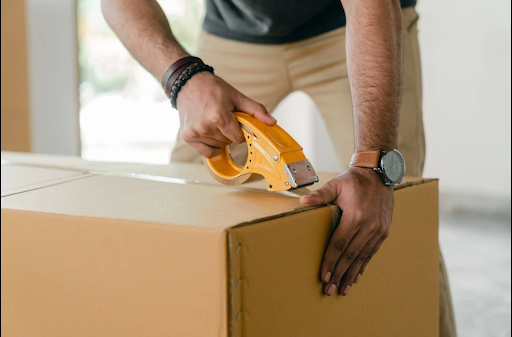Moving heavy and oversized items without professional help can be challenging, but with the right techniques and tools, it can be done safely and efficiently. Whether you are relocating to a new home or simply rearranging furniture, understanding how to handle bulky items like sofas, refrigerators, or large cabinets is essential. While hiring a moving company can make the process easier, sometimes doing it yourself is the only option. To ensure a smooth move, follow these expert strategies to transport heavy items without professional assistance.
Plan and Prepare Before Moving
Before lifting any heavy object, planning is crucial. Start by clearing a path from the item’s current location to its new destination. Remove obstacles like rugs, loose cables, or fragile objects that could cause accidents. Measure doorways, hallways, and staircases to ensure that the item will fit through without damage. If necessary, remove doors or disassemble large furniture pieces to make the move easier. Having a clear strategy will prevent unnecessary strain and accidents during the moving process.
Use the Right Moving Equipment
Investing in the right moving equipment can make a significant difference when handling heavy objects. Tools like furniture dollies, hand trucks, moving straps, and sliders can help distribute weight evenly and reduce strain on your body. A dolly allows you to transport large items with minimal effort, while sliders help move furniture across floors without scratching the surface. Moving straps, also known as lifting straps, can assist in lifting heavy objects by evenly distributing weight across your shoulders and arms, making lifting easier and safer.
Proper Lifting Techniques to Avoid Injuries
Lifting heavy items incorrectly can lead to serious injuries, so it’s important to use proper lifting techniques. Always bend at your knees, not your waist, and lift with your legs rather than your back. Keep the item close to your body to maintain control and reduce strain. If possible, use a team approach and lift with a partner to distribute weight evenly. Avoid twisting your body while lifting, and instead, pivot your entire body by moving your feet. Wearing supportive gloves can also improve your grip and prevent items from slipping out of your hands.
Disassemble Large Items When Possible
Taking apart large furniture and appliances can make moving much easier. Remove drawers from dressers, detach legs from tables, and disassemble bed frames to reduce weight and bulkiness. If you’re moving a refrigerator, empty its contents and remove shelves to prevent shifting during transport. Keep screws and small parts in labeled bags to make reassembly simpler. By breaking items down into smaller, more manageable pieces, you’ll reduce the risk of damage and make transportation much smoother.
Use Sliding and Rolling Methods
Instead of lifting heavy items entirely, sliding and rolling methods can help minimize physical exertion. Use furniture sliders or thick blankets under bulky items to glide them across floors effortlessly. If you have a wheeled cart or a hand truck, place the item on it and roll it to the desired location. This method is particularly useful for moving appliances like washing machines, refrigerators, and large cabinets without causing strain on your back or damaging your flooring.
Leverage Household Items for Assistance
In the absence of professional moving tools, household items can serve as makeshift moving aids. Towels, blankets, and cardboard pieces can act as furniture sliders, allowing heavy items to move smoothly across surfaces. Ropes and belts can be used to secure furniture during transport, and wooden planks can serve as makeshift ramps for navigating steps. Thinking creatively and utilizing available resources can significantly ease the moving process without professional assistance.
Get Help from Friends or Family
Moving heavy objects alone can be risky and physically demanding. Enlist the help of friends or family members to share the workload and ensure a safer move. Having extra hands can provide the necessary strength and stability needed for lifting and maneuvering oversized items. If possible, assign specific roles, such as one person guiding while others lift and carry. Good communication and coordination will prevent mishaps and make the process more efficient.
Protect Your Home and Belongings
Heavy and oversized items can easily damage walls, floors, and door frames if not handled carefully. Use moving blankets, padding, or cardboard to protect your home’s surfaces from scratches and dents. If moving furniture up or down stairs, consider using a plywood ramp to prevent unnecessary strain and potential damage. Additionally, secure doors and drawers with tape or stretch wrap to prevent them from swinging open during transit. Taking these precautions will help preserve your belongings and avoid costly repairs.
Consider Professional Help for Extremely Heavy Items
While it is possible to move heavy items without professional assistance, some objects may be too bulky or dangerous to handle alone. In such cases, hiring a company like Wise Move can be a smart investment. Professional movers have the experience, equipment, and expertise needed to transport oversized items safely. If an item is particularly heavy or valuable, seeking professional help can prevent injuries and ensure that your belongings arrive undamaged.
Moving heavy and oversized items without professional help requires careful planning, the right equipment, and proper lifting techniques. By disassembling large furniture, using sliders and dollies, and enlisting help from friends, you can safely transport bulky items without unnecessary strain. While DIY moving is possible, recognizing your physical limitations and seeking professional assistance when needed is crucial. Whether you’re moving across the house or to a new location, taking the right precautions will ensure a smooth and damage-free experience.


